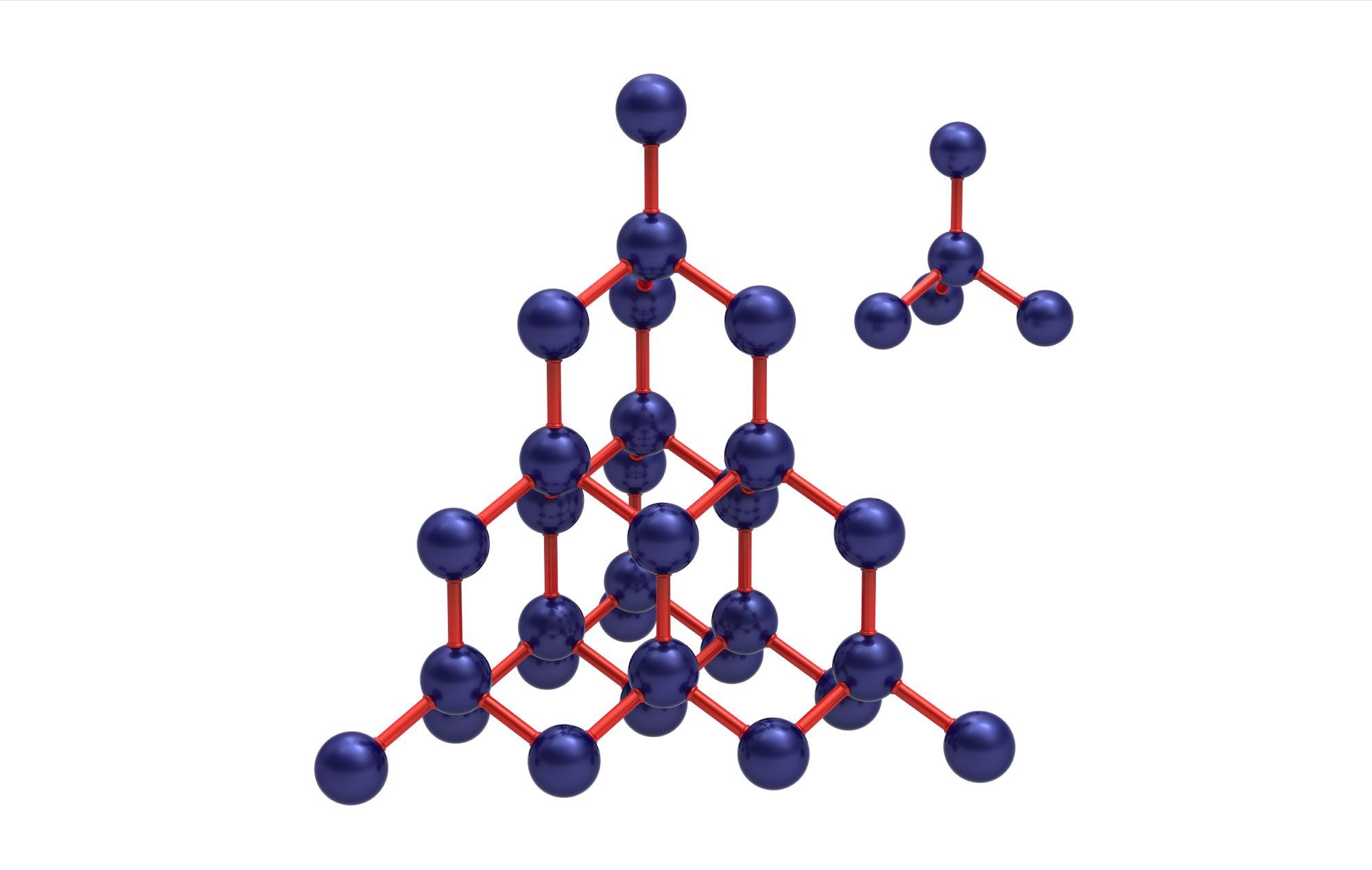A team of researchers from the United States, the Netherlands and the U.K. has recreated a discrete time crystal using a chain of programmable quantum spin states in a carbon-13 (13C) diamond lattice. The system exhibits many-body localization properties, indicating it is a genuine time crystal.

Image Credit: Shutterstock.com/ Boris15
Nitrogen-vacancy (NV) centers are defects in the diamond’s crystal lattice. Optical techniques were used to control the spin states of electrons. This modulated the nuclear spins in nearby carbon-13 atoms, which functioned as quantum bits (qubits) with programmable quantum states.
This opens up new possibilities for exploiting non-equilibrium quantum mechanics in novel nano-engineering applications.
Recreating Discrete Time Crystals
In equilibrium, many-body phenomena are described by macroscopic variables, such as temperature and pressure. Yet, when these systems are driven by external periodic stimulation, they settle into a time-periodic steady state. These so-called Floquet systems (derived from Floquet theory) extend the notion of equilibrium to driven quantum systems.
Several experiments and studies have shown classical and quantum phase transitions into spatially ordered states. In 2012, Prof. Frank Wilczek, a Nobel Laureate in physics, proposed that some quantum systems may also settle into time ordered states under periodic stimulation.
Most notably, these “time” crystals exhibit periodic behavior over an integer multiple of the period of the stimulation applied to the system - i.e., τ=nT, where τ is the period of the crystal’s oscillation, n is the integer “order” of the time crystal, and T is the driving period. Hence, they are known as “discrete time crystals.”
Most physical (many-body) systems absorb energy to reach a state of thermal equilibrium. However, such heating destroys the temporal crystalline order found in quantum many-body systems, such as discrete time crystals.
In the Many-Body Localization (MBL) method used by the interdisciplinary team, a certain amount of disorder is introduced into the quantum system. In such a system, although the particles couple with different quantum states, they do so randomly. This leads to destructive interference. Hence the system does not heat up.
Recreating a Many-Body Localized Quantum Simulator
The multidisciplinary team comprised researchers from Delft University of Technology in the Netherlands, Element Six Innovation in the U.K, the University of California at Berkeley, and the Lawrence Berkeley National Laboratory.
They developed their quantum simulator based on individually controllable and detectable carbon-13 (13C) nuclear spins in a diamond lattice.
The team achieved a state of disorder in their quantum system because the positions of the carbon-13 nuclear spins within the lattice were not ordered. Therefore, this caused variations in the coupling between spins.
The carbon-13 atoms were placed close to a nitrogen-vacancy (NV) center at 4K, thereby controlling the spins of these atoms. These spins exhibited the properties of well-isolated quantum bits (qubits) with coherence times up to tens of seconds. They were coupled via dipole-dipole interactions and controlled by optically modulated electron spins in the NV centers.
The team initialized the system by setting all the nuclear spins to the same quantum state. Subsequently, they altered these states by selectively applying radiofrequency (RF) pulses. After each cycle, they re-initialized the system so the next cycle could begin. The period of these cycles was twice the period of the driving RF pulses. They repeated this over 800 cycles for a total of eight seconds.
Thus, the team demonstrated a characteristic behavior of discrete time crystals. Regardless of the system’s initial state, the system exhibited periodic motion and stabilized by disorder due to internal interactions and not prethermal effects.
This powerful quantum simulator demonstrated control over individual qubits with promising applications in nanoscale engineering and quantum computing.
References and Further Reading
Randall, J., et al., (2021) Many-body-localized discrete time crystal with a programmable spin-based quantum simulator. Science, [online] Available at: https://doi.org/10.1126/science.abk0603
Disclaimer: The views expressed here are those of the author expressed in their private capacity and do not necessarily represent the views of AZoM.com Limited T/A AZoNetwork the owner and operator of this website. This disclaimer forms part of the Terms and conditions of use of this website.